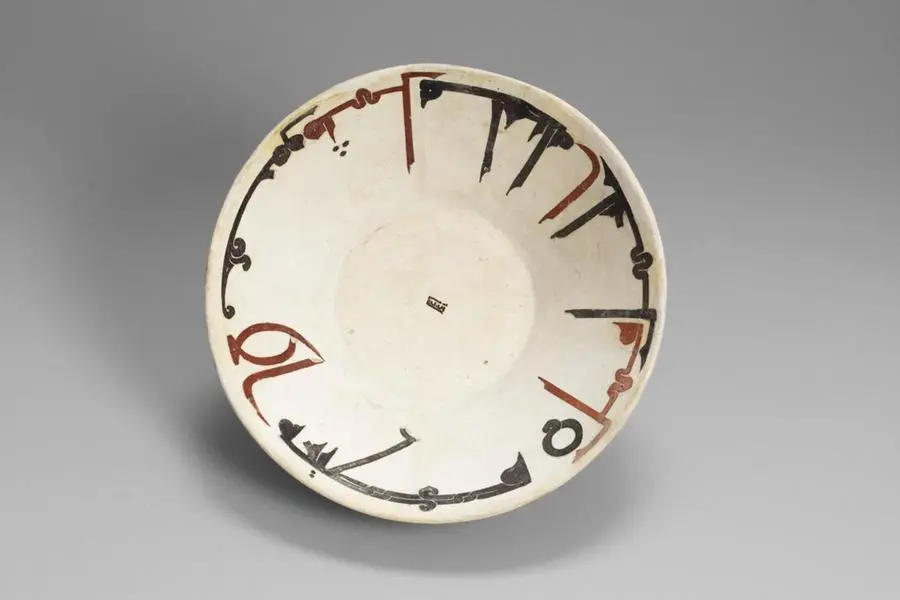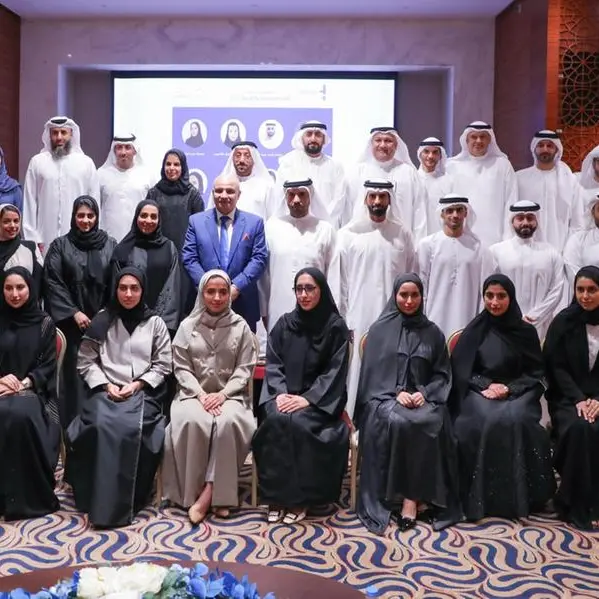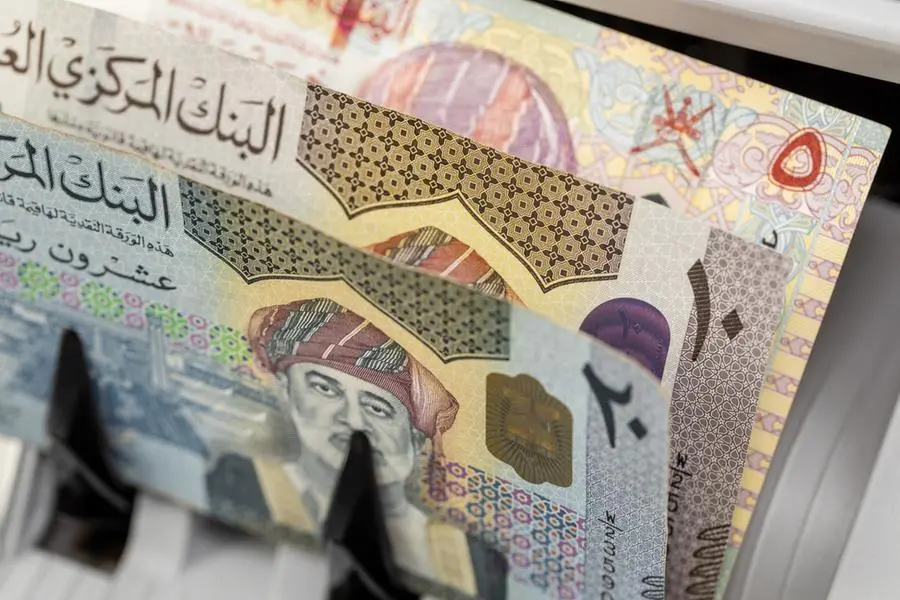PHOTO
Bowl with two-colour inscription; Bowl with two-colour inscription, Central Asia, 10th-11th century CE, Ceramic, with underglaze slip decoration, 8.5 x 25.3 cm, 25.3 cm, LAD 2011.028, Louvre Abu Dhabi, Abu Dhabi. Image Courtesy: Department of Culture and Tourism - Abu Dhabi / Photo Thierry Ollivier
Abu Dhabi, UAE – Louvre Abu Dhabi and the National Museum, Sultanate of Oman (NM) have signed a new loan agreement, through which two distinguished pieces from Louvre Abu Dhabi's collection will be exhibited at the National Museum for a duration of one year. This agreement continues the tradition of cultural exchange between the two museums, offering visitors an insightful exploration into Islamic art and modern abstraction.
The loan agreement builds upon a history of successful partnerships and cultural exchanges between Louvre Abu Dhabi and the National Museum. Notably, the two museums previously collaborated on the “Gardens of Paradise: The Language of Flowers in Iznic Ceramics” exhibition at the National Museum in the Sultanate of Oman, inaugurated in December 2021, which explored the art of Iznik ceramics decorated with flowers and the special symbols it embodies related to evoking Qur’anic descriptions that recall the gardens of Paradise, showcasing pieces loaned from the Louvre Abu Dhabi, including six beautiful Iznik ceramics from the 16th century. In reciprocation, Louvre Abu Dhabi also received loans from the National Museum, including a beautifully crafted Omani dagger (Al-Busaidi dynasty, 1800-1900), an intricately designed copper inkwell (1905) displayed in the Grand Vestibule, and a rare shell-shaped incense burner from the 12th – 14th centuries.
The National Museum will feature the following artworks from Louvre Abu Dhabi:
- Bowl with a Two-colour Inscription
© Department of Culture and Tourism - Abu Dhabi / Photo Thierry Ollivier
This cup from Samanid dynasty (10th - 11th century) hails from Khorasan and Transoxiana, regions traversed by the ancient Silk Roads. Adorned with Arabic proverbs (amthal), it reflects the wisdom of Ali in Abi Talib and the hadith. The contrasting black or brown slip decoration on a white slip base showcases the skill of an adept calligrapher, while the circular composition and the sobriety of the decorative and lexical vocabulary enhance the power of the inscription.
- Homage to the Square
© Department of Culture and Tourism - Abu Dhabi / Photo Hervé Lewandowski
Josef Albers, a master of color relationships, created this iconic piece in 1963. Josef Albers' "Homage to the Square" series, initiated in 1950 in the United States, encapsulates his exploration into color theory and optical effects through simple yet profound compositions of nested squares. Utilizing a distinctive technique of oil on masonite panels, these paintings—marked by their subtle textures and the illusion of spatial depth—serve as a pivotal study in color dynamics. Albers' approach, particularly through this series and his seminal book "Interaction of Color," highlights his contribution to abstract art as a universal language, redefining art's relationship to reality amidst the challenges of the twentieth century.
The first piece, ‘Bowl with a Two-colour Inscription’ is set to enrich the National Museum of Oman’s ‘The Splendours of Islam’ gallery, a showcase featuring a range of artifacts that span centuries of Islamic history, including manuscripts, ceramics, textiles, metalworks, and architectural elements, providing a broader perspective on Islamic art's historical and cultural significance. The second piece, Josef Albers’ ‘Homage to the Square’ was selected to introduce a piece of European/American contemporary art into the museum’s collection. The piece will be included in the ‘Oman and the World’ gallery, which aims to reflect Oman's global connections and the exchange of cultural and artistic ideas between Oman and the wider world, particularly in the context of modern and contemporary art.
Visit the National Museum and Louvre Abu Dhabi to witness these treasures firsthand and immerse yourself in the rich tapestry of art, culture, and history that binds our world together.
-Ends-
For more information on Louvre Abu Dhabi, visit their website here. For more information on National Museum, click here.
-Ends-
ABOUT LOUVRE ABU DHABI
Created by an exceptional agreement between the governments of Abu Dhabi and France, Louvre Abu Dhabi was designed by Jean Nouvel and opened on Saadiyat Island in November 2017. The museum is inspired by traditional Islamic architecture and its monumental dome creates a rain of light effect and a unique social space that brings people together.
Louvre Abu Dhabi celebrates the universal creativity of mankind and invites audiences to see humanity in a new light. Through its innovative curatorial approach, the museum focuses on building understanding across cultures: through stories of human creativity that transcend civilisations, geographies and times.
The museum’s growing collection is unparalleled in the region and spans thousands of years of human history, including prehistoric tools, artefacts, religious texts, iconic paintings and contemporary artworks. The permanent collection is supplemented by rotating loans from 19 French partner institutions, regional and international museums.
Louvre Abu Dhabi is a testing ground for new ideas in a globalised world and champions new generations of cultural leaders. Its international exhibitions, programming and Children’s Museum are inclusive platforms that connect communities and offer enjoyment for all.
ABOUT NATIONAL MUSEUM OF OMAN
The National Museum is the Oman’s flagship cultural institution, showcasing the Sultanate’s cultural heritage, both tangible and intangible, from the earliest evidence of human settlement in the Oman Peninsula through to the present day.
The Museum was established by Royal Decree 62/2013, issued on 16 Muharram 1435 AH (corresponding to 20 November 2013 CE), as a legal entity with financial and administrative independence and the capacity to own, manage and dispose of tangible and intangible assets of Oman`s cultural heritage. The National Museum received the honorary patronage from His Majesty Sultan Haitham bin Tarik on (September 27,2020 CE). The National Museum supervises a number of historical houses in the historic city of Muscat, namely, Bayt Greiza, Bayt Sayyid Nader bin Faisal, Bayt Sayyidah Muzna bint Nader and, as-Saidyah School Museum and Muscat Gate Museum.
In fulfilling its cultural and humanitarian mission, the National Museum aims to maintain a direct link between Omanis and their heritage, convey the importance of Oman’s cultural heritage to a domestic and international audience, and keep heritage relevant in the modern age.
The National Museum’s vision is to bring leadership, inspiration and innovation to the museums industry in the Sultanate of Oman.
The Museum houses more than 7,000 objects and offers 33 digital immersive experiences, state-of-the-art conservation facilities, a UHD cinema, and discovery areas for children. It features an integrated infrastructure for special needs and is the first museum in the Middle East to adopt Arabic Braille script for the visually impaired. It also houses the region’s first open-plan museum storage concept, where visitors can learn about the various processes that artefacts go through before they are put on display.
The Museum contains (13) static museum Gallery: the Land and People Gallery, Arms and Armour Gallery, Maritime History Gallery, Currency Gallery, Civilisation in the Making Gallery, Timeline Gallery, Intangible Heritage Gallery, The Renaissance Gallery (Sultan Qaboos bin Said`s Corner), Oman and the World Gallery, Splendours of Islam Gallery, Prehistory and Ancient History Galleries, The Land of Frankincense, Bat, al-Khutm and al-Ayn, Collections Gallery, in addition to a Gallery to temporary exhibitions.




















